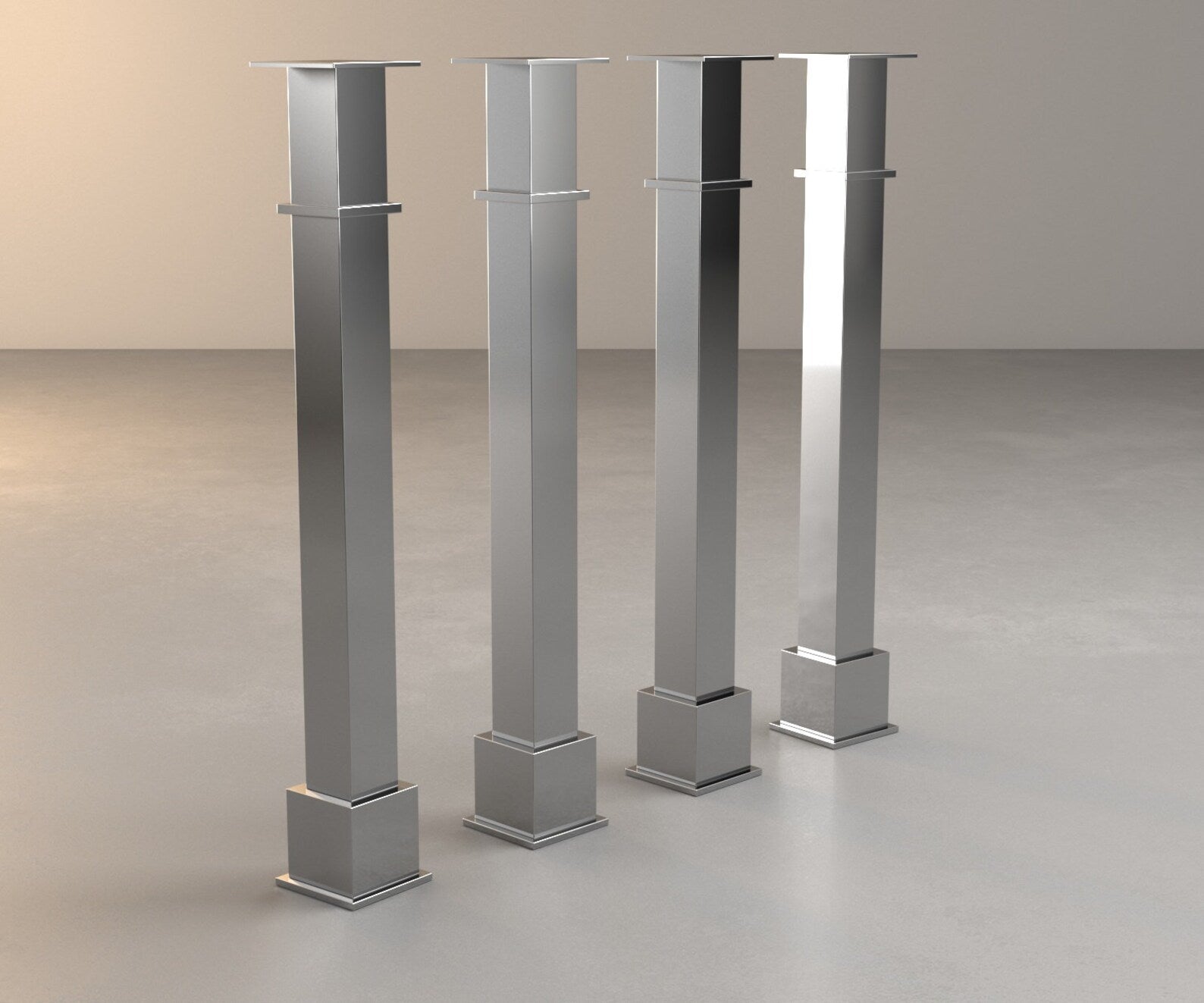Take Full Advantage Of Convenience with Flexible Legs For Kitchen Island Attributes
Take Full Advantage Of Convenience with Flexible Legs For Kitchen Island Attributes
Blog Article
A Guide to Choosing the Perfect Legs For Cooking Area Island for Your Home
Choosing the excellent legs for your cooking area island is a nuanced decision that impacts both the functionality and aesthetic charm of this central area. As you consider these elements, it becomes evident that the ideal legs can change not only the look of your cooking area but additionally its use for years to come.

Recognizing Cooking Area Island Legs
When selecting legs for a kitchen island, it's necessary to recognize their functional and visual functions in the total style. The legs work as a vital support system, ensuring security and resilience for the island, which typically operates as a work area, eating location, or gathering spot. As a result, the option of product and building strategy have to be robust adequate to withstand everyday use and potential wear.
Along with their structural duties, legs add dramatically to the island's aesthetic allure. They can boost the kitchen's style, whether with standard, modern, or diverse layouts. The height and percentage of the legs are additionally vital factors to consider; they must harmonize with the island's kitchen counter height while making certain comfy seating for those utilizing the space.
Moreover, the leg layout can influence the overall flow of the kitchen. Open, ventilated leg styles can produce a sense of lightness, while solid, substantial legs might convey a more grounded and steady visual - Legs For Kitchen Island. Understanding these functional and aesthetic elements will assist house owners in making notified options that enhance their cooking area's style and enhance its functionality
Popular Styles and Products
The option of legs for a kitchen island incorporates a variety of prominent styles and materials, each offering special characteristics that can boost both performance and visual appeals. Conventional legs usually show ornate details and workmanship, improving classic kitchen area designs.

Elevation and Stability Factors To Consider

The legs of the kitchen island must provide appropriate support, making sure that the structure can stand up to day-to-day use without moving or tottering. Material choice plays a substantial role in security; metal legs, for instance, often tend to provide better stamina contrasted to wood.
Matching Your Cooking Area Aesthetic
Picking the right legs for your kitchen area island goes past functionality; it also plays a substantial role in the general visual of the room. When choosing legs, think about the layout style of your cooking area. For a contemporary look, smooth steel or minimal layouts can create a clean, contemporary vibe. On the various other hand, rustic or traditional kitchen areas commonly gain from wooden legs with intricate outlining or a distressed coating, boosting warmth and personality.
Color is one more critical element. Legs that match or contrast with your island's surface and surrounding see this page kitchen cabinetry can develop aesthetic consistency or striking focal factors. For example, matching dark wood legs with a light marble countertop can include deepness and passion. Furthermore, consider the surface of the legs; matte, glossy, or textured finishes can significantly influence the total feeling of the kitchen area.
Installment and Upkeep Tips
Mounting kitchen area island legs calls for careful interest to information to guarantee both security and visual appeal. Utilize a stud finder to situate wall studs if you are connecting the legs to a wall surface or using braces for included support.
When safeguarding the legs, use high-grade screws and, if necessary, wood adhesive for added strength. For metal legs, make sure that you are making use of suitable anchors and devices to protect against damage to your flooring. It is suggested to look for levelness after installation, making modifications as required to stay clear of tottering.
Maintenance is equally essential for longevity - Legs For Kitchen Island. Regularly check the legs for any kind of indications of wear or helping to loosen, specifically in high-traffic locations. Clean the legs with a suitable cleaner, avoiding abrasive materials that may scratch the surface. visit this site right here For wooden legs, think about applying a wood conditioner regularly to preserve their surface. By complying with these setup and maintenance suggestions, you can make sure that your cooking area island legs continue to be both aesthetically attractive and practical.
Final Thought
In final thought, picking the ideal legs for a kitchen area island requires mindful consideration of elevation, stability, and aesthetic compatibility. Eventually, thoughtful leg choice plays a crucial role in boosting both the functionality and layout of the cooking area area.
When selecting legs for a kitchen island, it's necessary to recognize their visual and useful roles in the overall style. Open, ventilated leg styles can produce a try this web-site feeling of agility, while solid, considerable legs might convey a much more based and secure aesthetic. The legs of the kitchen area island need to offer appropriate assistance, guaranteeing that the framework can stand up to everyday usage without moving or tottering.Installing kitchen island legs needs cautious focus to information to ensure both stability and aesthetic appeal.In verdict, choosing the ideal legs for a kitchen area island requires cautious factor to consider of elevation, security, and visual compatibility.
Report this page